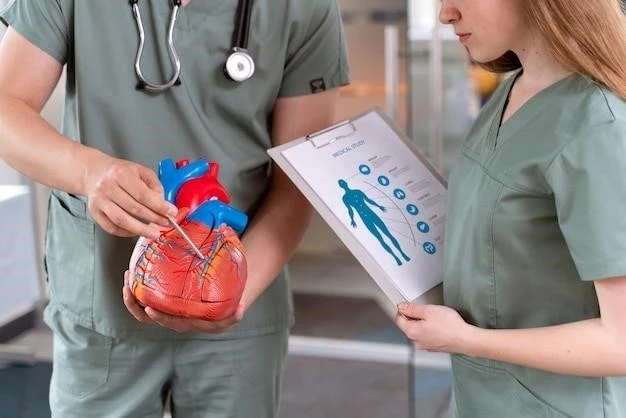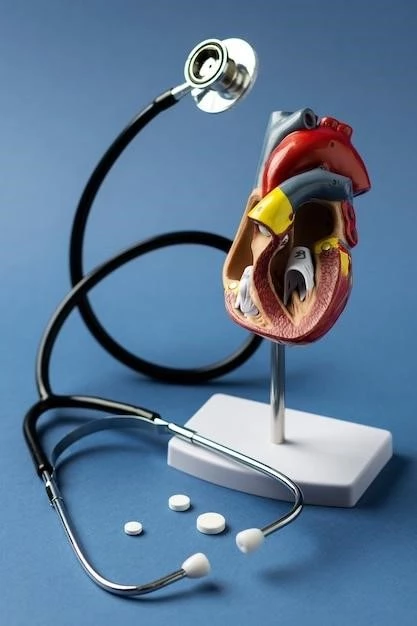Overview of Symptoms
Dilated cardiomyopathy symptoms can vary and may include shortness of breath, fatigue, swelling in the legs, weight gain, and irregular heartbeats․
Common Symptoms
The common symptoms of dilated cardiomyopathy include shortness of breath, fatigue, swelling in the legs, and an irregular or rapid heartbeat․
Less Common Symptoms
Less common symptoms of dilated cardiomyopathy may include dizziness, fainting, chest pain, and palpitations․ These symptoms should be evaluated by a healthcare professional․

Genetic Factors
Genetic factors play a significant role in familial dilated cardiomyopathy, with mutations in certain genes impacting the heart’s structure and function․ These genetic abnormalities can be inherited within families․
Environmental Factors
Environmental factors such as exposure to toxins, certain infections, alcohol abuse, and nutritional deficiencies can contribute to the development of dilated cardiomyopathy in individuals predisposed to the condition․
Other Contributing Factors
Additional factors like hypertension, diabetes, thyroid disorders, and certain medications can also contribute to the development of dilated cardiomyopathy, complicating the underlying condition and necessitating comprehensive management․
Medication
Medications like ACE inhibitors, beta-blockers, and diuretics are commonly prescribed to manage symptoms, improve heart function, and regulate blood pressure in patients with cardiomyopathy․
Implantable Devices
Implantable devices such as pacemakers or implantable cardioverter-defibrillators (ICDs) may be recommended to help control heart rhythms and reduce the risk of sudden cardiac arrest in individuals with cardiomyopathy․
Surgical Procedures
In advanced cases of cardiomyopathy, surgical procedures such as heart transplant or ventricular assist device (VAD) implantation may be necessary to improve heart function and overall quality of life for the patient․
Dietary Modifications
Individuals with cardiomyopathy may benefit from dietary modifications such as reducing salt intake, limiting saturated fats, increasing fiber-rich foods, and maintaining a balanced diet to support heart health and overall well-being․
Exercise Recommendations
Exercise recommendations for individuals with cardiomyopathy typically involve a tailored approach under medical supervision, focusing on low-impact activities like walking or cycling to improve cardiovascular fitness without straining the heart muscle․
Stress Management Techniques
Implementing stress management techniques like mindfulness, meditation, and breathing exercises can help individuals with cardiomyopathy reduce psychological stress and promote overall well-being, which is essential for heart health․
Purpose of Genetic Testing
Genetic testing for familial cardiomyopathy aims to identify specific gene mutations that may predispose individuals to the condition, aiding in early detection, assessing disease risk in family members, and informing personalized treatment and management strategies․
Procedure for Genetic Testing
The procedure for genetic testing typically involves a blood sample collection, DNA analysis to identify mutations in specific genes associated with familial cardiomyopathy, and consultation with a genetic counselor or healthcare provider to interpret and discuss the test results․
Interpreting Genetic Test Results
Interpreting genetic test results involves analyzing identified mutations, understanding their implications on cardiomyopathy development and progression, assessing familial risk, and guiding personalized treatment and preventive measures for individuals and family members․
Factors Affecting Prognosis
Various factors affecting the prognosis of dilated cardiomyopathy include the underlying cause, severity of symptoms, response to treatment, and co-existing health conditions, all of which can influence the long-term outlook and quality of life for individuals with the condition․
Long-Term Outlook
The long-term outlook for individuals with dilated cardiomyopathy can vary based on the progression of the condition, adherence to treatment plans, lifestyle modifications, and regular monitoring by healthcare professionals to manage symptoms and optimize heart function in the long run․
Management of Prognosis
The management of dilated cardiomyopathy prognosis involves close monitoring, adherence to prescribed treatments, lifestyle adjustments, regular follow-ups, and collaboration with a healthcare team to optimize heart function, minimize complications, and improve overall quality of life․
Underlying Health Conditions
Underlying health conditions such as hypertension, diabetes, coronary artery disease, and viral infections can increase the risk of developing cardiomyopathy by impacting heart structure and function․
Family History
A family history of cardiomyopathy or sudden cardiac death can significantly increase the risk of developing the condition, emphasizing the importance of genetic predisposition and inherited factors in familial dilated cardiomyopathy․
Other Risk Factors
Other risk factors for developing cardiomyopathy include obesity, substance abuse, certain medications, excessive alcohol consumption, and exposure to toxins or radiation, all of which can contribute to heart muscle damage and the development of the condition․
Hypertrophic Cardiomyopathy
Hypertrophic cardiomyopathy is characterized by an abnormal thickening of the heart muscle, leading to poor relaxation and obstruction of blood flow from the heart․ It may result in symptoms like chest pain, shortness of breath, fainting, and an irregular heartbeat․
Restrictive Cardiomyopathy
Restrictive cardiomyopathy is characterized by stiffening of the heart muscle, impairing its ability to relax and fill with blood properly․ Symptoms may include fatigue, shortness of breath, swelling, and arrhythmias due to reduced heart function․
Arrhythmogenic Right Ventricular Cardiomyopathy
Arrhythmogenic right ventricular cardiomyopathy is a condition where healthy heart muscle is replaced by fibrous or fatty tissue in the right ventricle, leading to abnormal heart rhythms and increasing risk of sudden cardiac arrest or heart failure․
